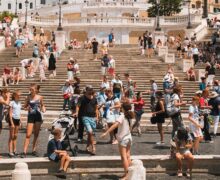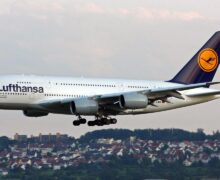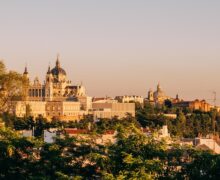Iceland tourism industry expects restrictions and taxes

Iceland has been experiencing a historic tourist boom for 7 years. 20% more tourists are flooding its volcanic soil every year. The Icelandic government is now considering whether to impose taxes or restrictive measures to better regulate the inflow in the country because the growing amount of visitors is not only positive for Iceland tourism – it causes price explosions, saturation of accommodation, or even modification of the tourist structure.
+264% in six years, 20 to 30% more tourists each year, 23% of the national GDP… The figures are impressive.
In the space of seven short years, Iceland tourism has become the country’s first economic activity, ahead of traditional fishing and aluminum production.
The tourist boom started after the 2010 eruption of the Eyjafjallajökull volcano which paralyzed European air traffic.
“The public realized at that time that Iceland was not far away and gained to be known”, explains Eric Biard, co-founder of the tour operator Island Tours.
Since then, the national airline Icelandair has made Keflavik a crossing point between Europe and North America and low cost airlines have rushed to the destination, increasing the number of tourists from 488,000 in 2010 to 2.3 million expected this year. An explosion that pushes the centre-right government to act to better preserve its island.
Prices Going through the Roof
In 2016, the authorities began by putting an end to the reduced VAT policy for tourism. While now it is set at 11%, the Icelandic government now plans to set it at 21% in 2018.
“We want to prevent Iceland from becoming too much of a popular tourist destination,” said the Iceland Tourism Minister, reflecting on an increase of hotel tax, limiting the number of visitors to the popular sites and even the obligation for tour operators to purchase licenses. All this to reduce the impact of the tourist boom.
“Most types of tourism will be subjected to the general rate of value added tax, which will come into force on the 1st of July 2018,” the Ministry of Finance said in a recent press release.
According to the government’s initial estimates, this new VAT is expected to result in an “approximate 4% increase in the overall cost of a tourist stay in Iceland”.
A further increase in prices, coupled with other factors, is to come soon according to tourism professionals specialized in the destination.
“In fact, there are several factors coming into play in this explosion of prices in Iceland,” explains Jean-Marc Plessy, founder of the incoming agency Alkemia, who has been living in Iceland for 10 years and specializes in treks and discoveries around nature and in yoga.
“First, this VAT for the tourism industry. Then, a kind of culture of price increase and inflation. Every year, prices generally increase from 5 to 10%. Finally, the good health of the economy, the Icelandic crown is doing very well with respect to foreign currencies.”
A Saturated Tourist Structure
But for now, the price increase is far from curbing demand and Iceland welcomes more and more tourists from all over, all through the year.
“It’s a fact, there are a lot of people all round the year now. We have reached the point where the hotels are full in all seasons and not only during the summer, in Reykjavik as on the south and north coasts of the country,” notices Jean-Marc Plessy.
“In fact, this is not a new phenomenon since we have always had this concern,” explains Marc Broussaud, co-founder of Island Tours.
“Simply because of the enthusiasm for the destination, the filling in is happening earlier and earlier, as customers book earlier and earlier,” he said, referring to reservations of accommodations almost a year in advance.
“The enthusiasm is there and the number of visitors and flights to Iceland is increasing, but at the same time, local infrastructure does not follow. There are no more beds on the spot,” indicate the managers of Island Tours.
Another consequence: “we notice many more autotours, individual travelers, rentals via AirBnb and Booking”, summarizes Jean-Marc Plessy.
In short, the least expensive possible trips, to try to discover the island before it becomes inaccessible.
source: Tourism-Review
photo: Brad Weber / Wikimedia





